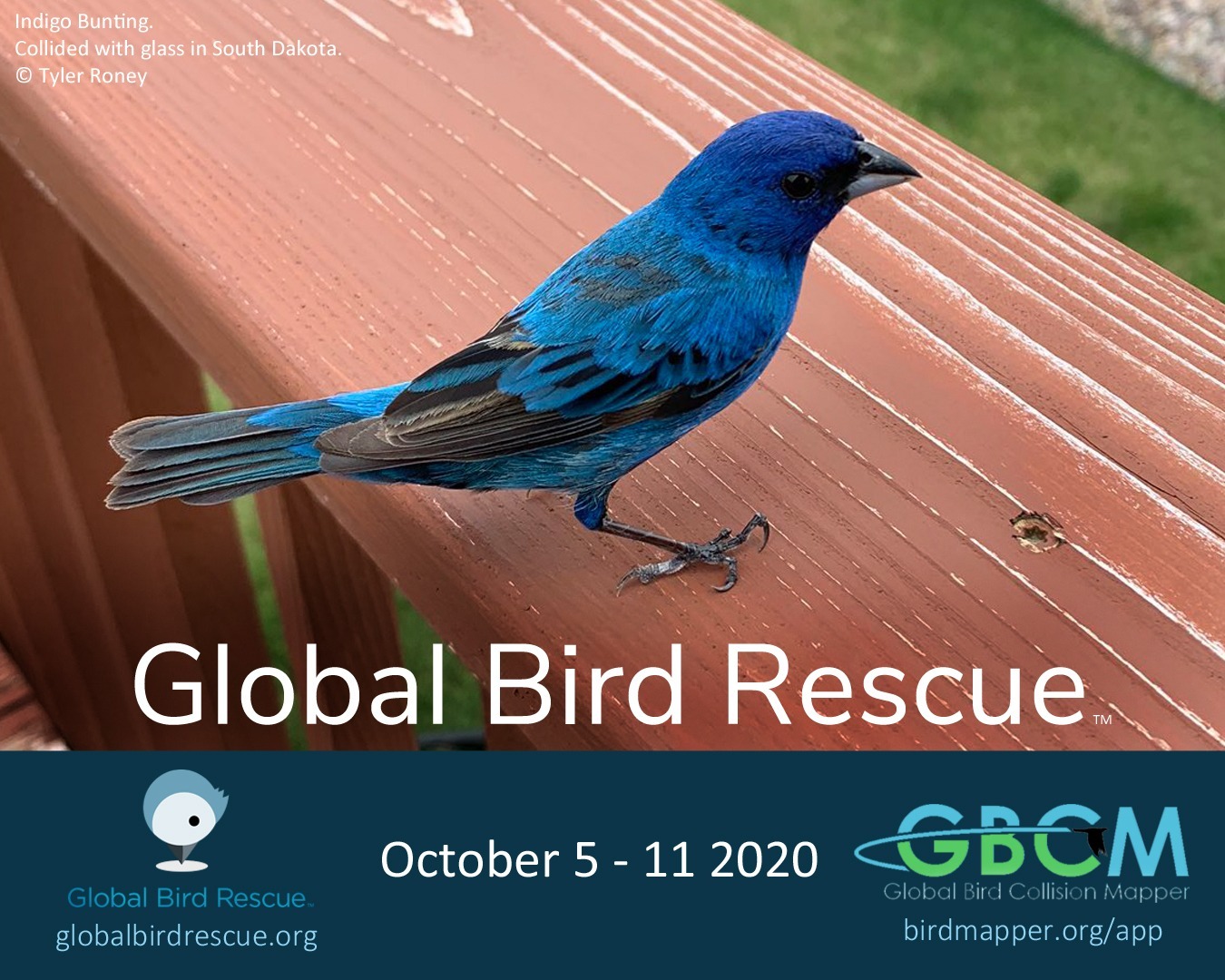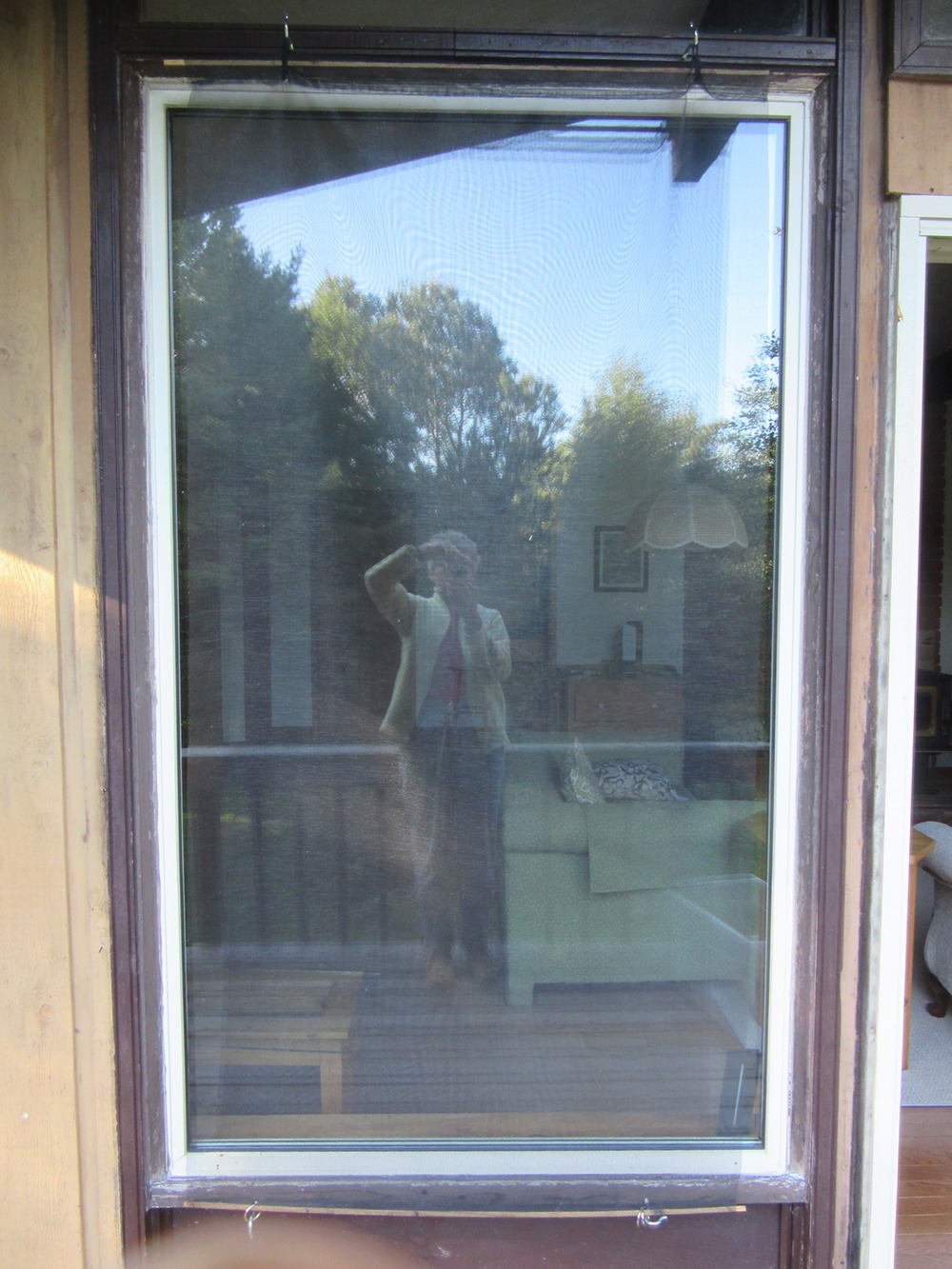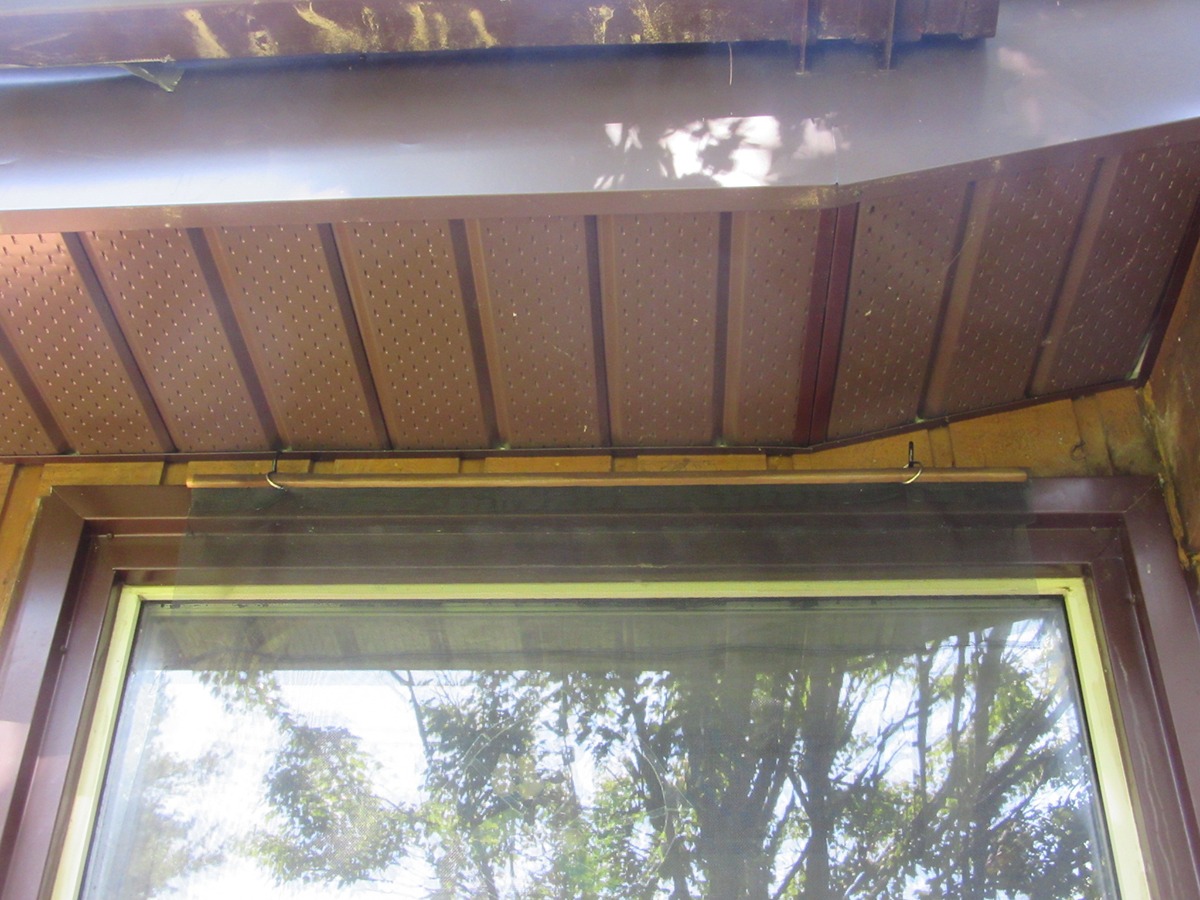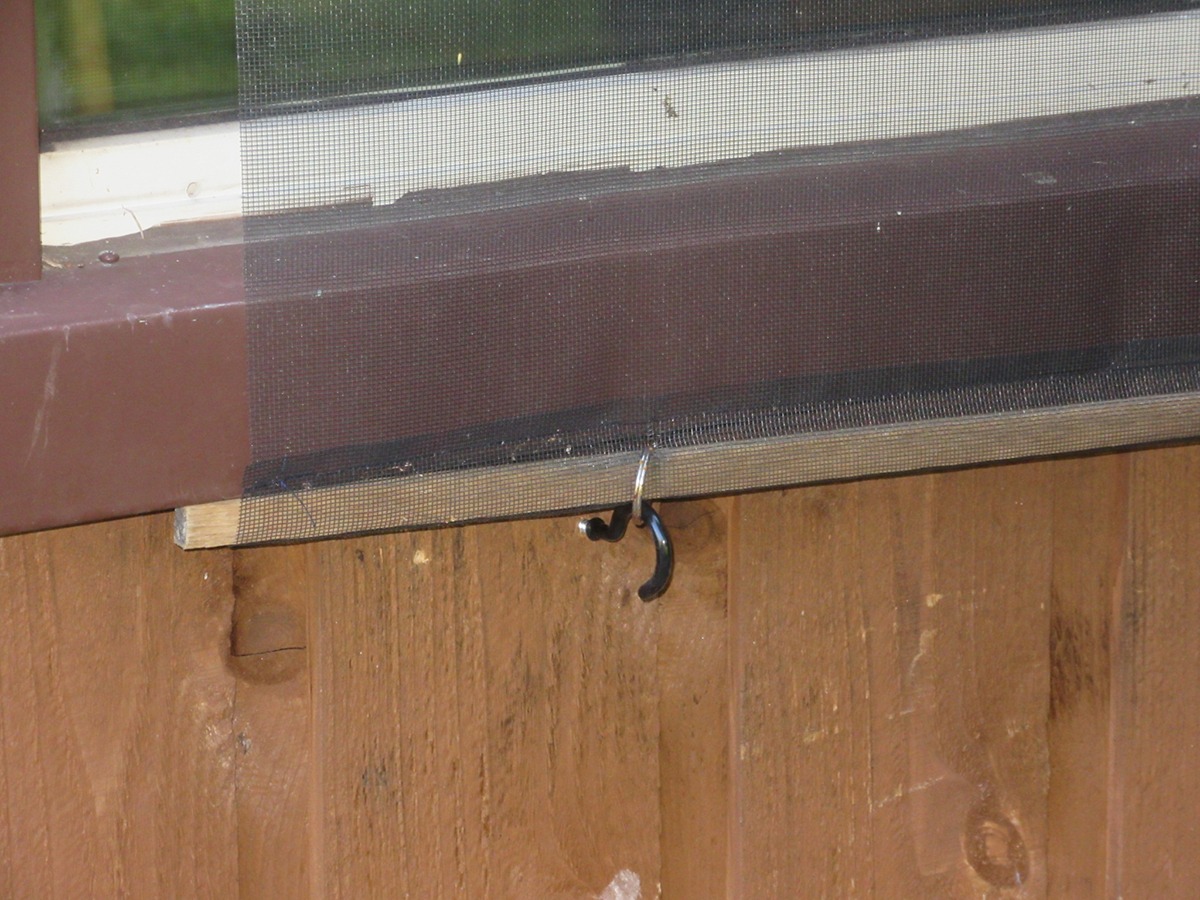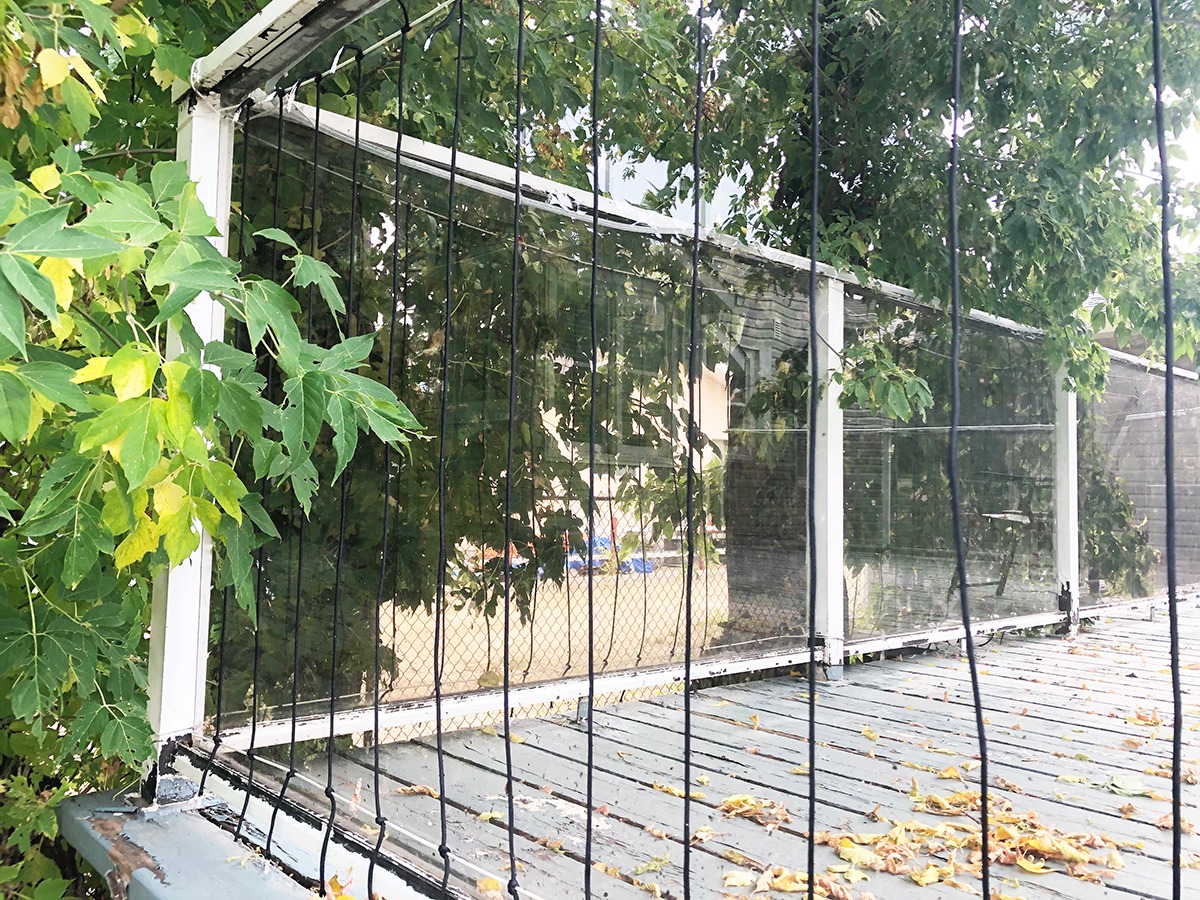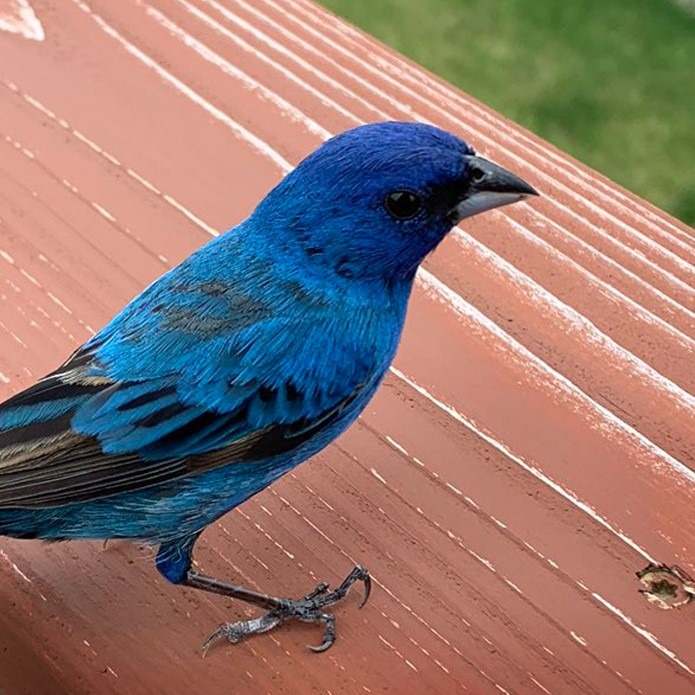By Ellen Jakubowski, Communications Specialist, Birds Canada
“Thud.” It’s the sound no bird lover wants to hear – another bird hitting the window. We now know that one bird hitting a window is not a rare accident or just nature taking its course. It’s part of a well-documented threat to birds posed by our modern way of life, one of the most significant ways in which people are contributing to bird declines. Researchers have estimated that collisions with windows kill approximately 25 million birds a year in Canada, and up to 1.5 billion a year across North America. Knowing all this, the “thud” is more than a personal tragedy, it’s a reminder of the urgent trouble our bird populations are in.
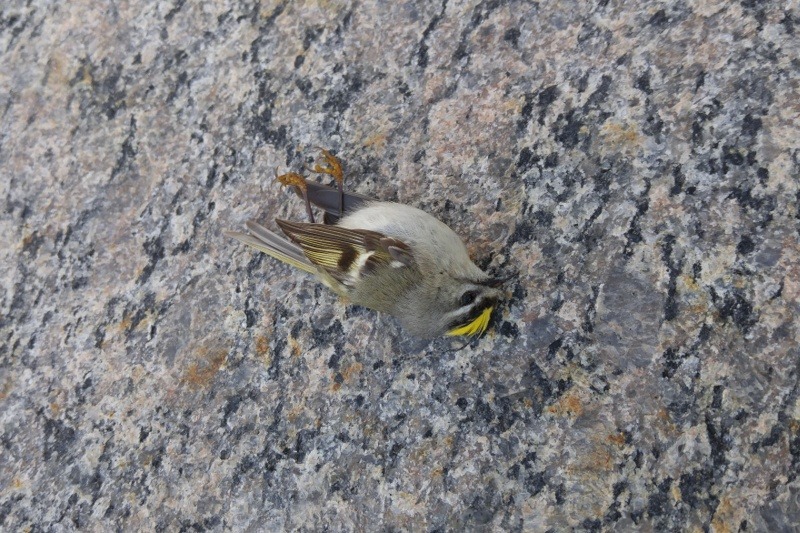
Golden-crowned Kinglet Photo: Ellen Jakubowski
Fortunately, solving the window collision problem is relatively straightforward. We need to make glass visible to birds. Research has shown us how to do it effectively, and there are a range of methods available, including simple, cost-effective ones. And we need to spread the word, because it is the sheer number of windows across our landscapes that multiply this threat and exert such a big collective impact.
Make your windows safe for birds
Margaret McLaren, a long-term volunteer and supporter of Birds Canada in Bracebridge, ON, recently got in touch to share how she made her windows safer for birds. “I tried to order bird screen since our windows have been particularly bad this year … However, the company’s website said they had no delivery options to me. So I made my own.” Her instructions are at the bottom of the page, and the materials should be available from your local hardware store. Thank you, Margaret, for passing along this DIY method for screens that can be installed on the outside of a window.
Whether you are handy like Margaret or prefer a store-bought solution, you can likely find a method that will help reduce bird kills at your home or workplace. Explore the options at these links:
Solutions for commercial buildings
If you choose to purchase a Feather Friendly DIY product and use Coupon Code BirdsCanada, Feather Friendly will make a donation to Birds Canada to support bird conservation!
Spread the word
It’s time to tell your friends, your family, your coworkers, your neighbours: “we need to talk about glass.” But it doesn’t need to be a depressing conversation, because there are solutions that really work! If you’re looking for a good reason to bring it up, why not join the international community of bird lovers raising awareness during Global Bird Rescue? From October 5 to 11, 2020, FLAP Canada, bird conservation groups, and members of the public around the world will rescue and document birds that have collided with buildings in their communities, while working to make the built environment safer for birds. You can be part of it by checking windows in your area for birds, or by speaking up about the scale of the window collision problem and how to address it. To learn more, visit flap.org/global-bird-rescue-2020/.
Bird Protection Screens – Instructions
Materials
4 x 3 ½ – 4 ½ -inch hooks (Length depends on your window frame – screen needs to hang at least 7 cm (3 inches) from the glass
4 x 1 ½ -inch key rings (or large sturdy paper clips)
2 x 3/8 -inch hardwood dowels
Fibreglass screening wide enough to cover the glass and about 15 cm (6 inches) longer than the window frame
Drill with bit appropriate for a pilot hole for your hooks
Saw to cut dowels
Sewing machine (useful but not absolutely necessary)
Procedure
- Fold over and sew a 5-cm (2-inch) “tube” out of one end of the screening.
- Attach 2 key rings near the stitching and 10-15 cm (4-6 inches) in from the edge.
- Cut dowel to length and thread through the tube and the keyrings.
- Drill pilot hole to match distance between key rings and screw hooks to the top of the window frame.
- Hang screening by key rings and mark where the final bottom of the screen should hang.
- Cut screening 5 cm (2 inches) below mark and repeat steps 1 – 3.
- This is the only tricky part. Screw the bottom hook into the window frame slightly below the bottom edge of the lower key rings and fit the keyrings over the hooks so the screening is taut.
- Wide windows might require a central set of hooks/keyrings to keep the middle of the screening taut.

